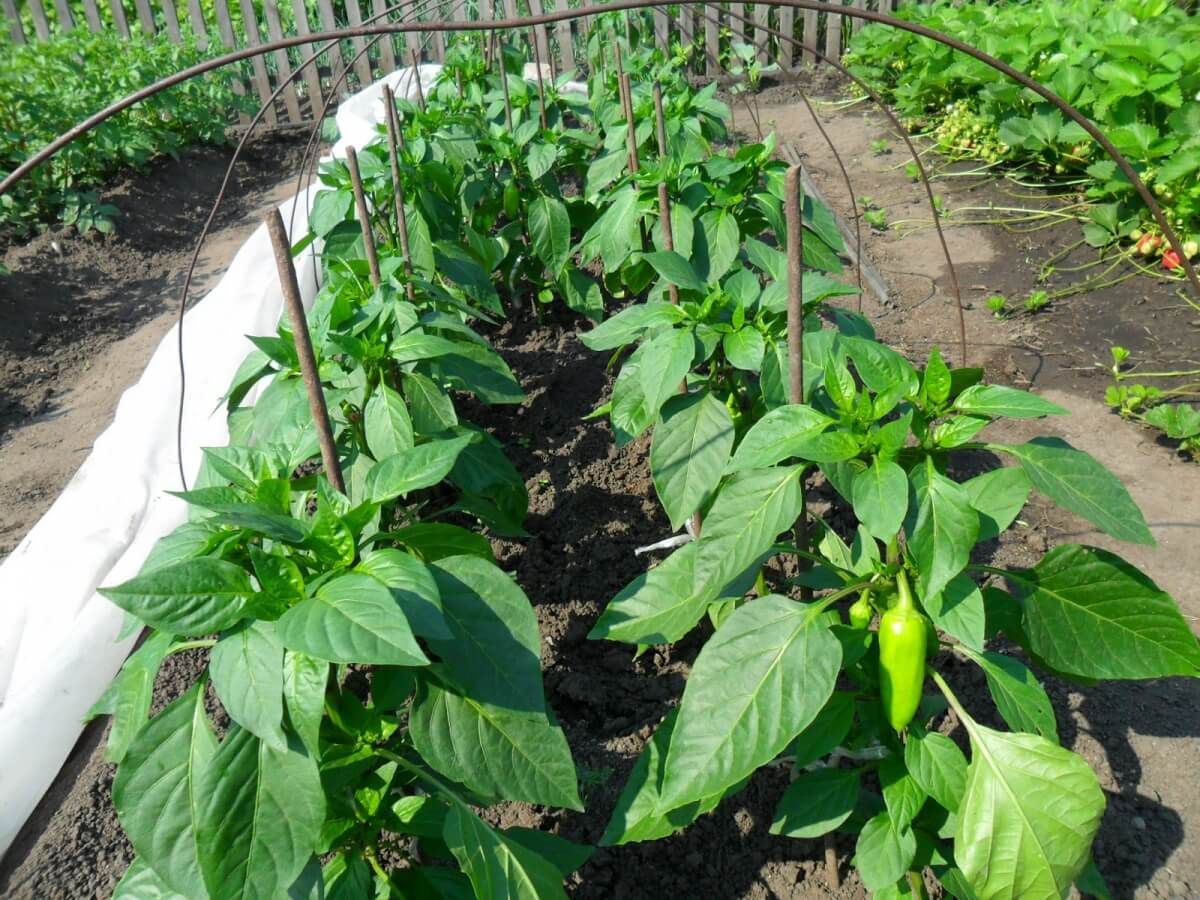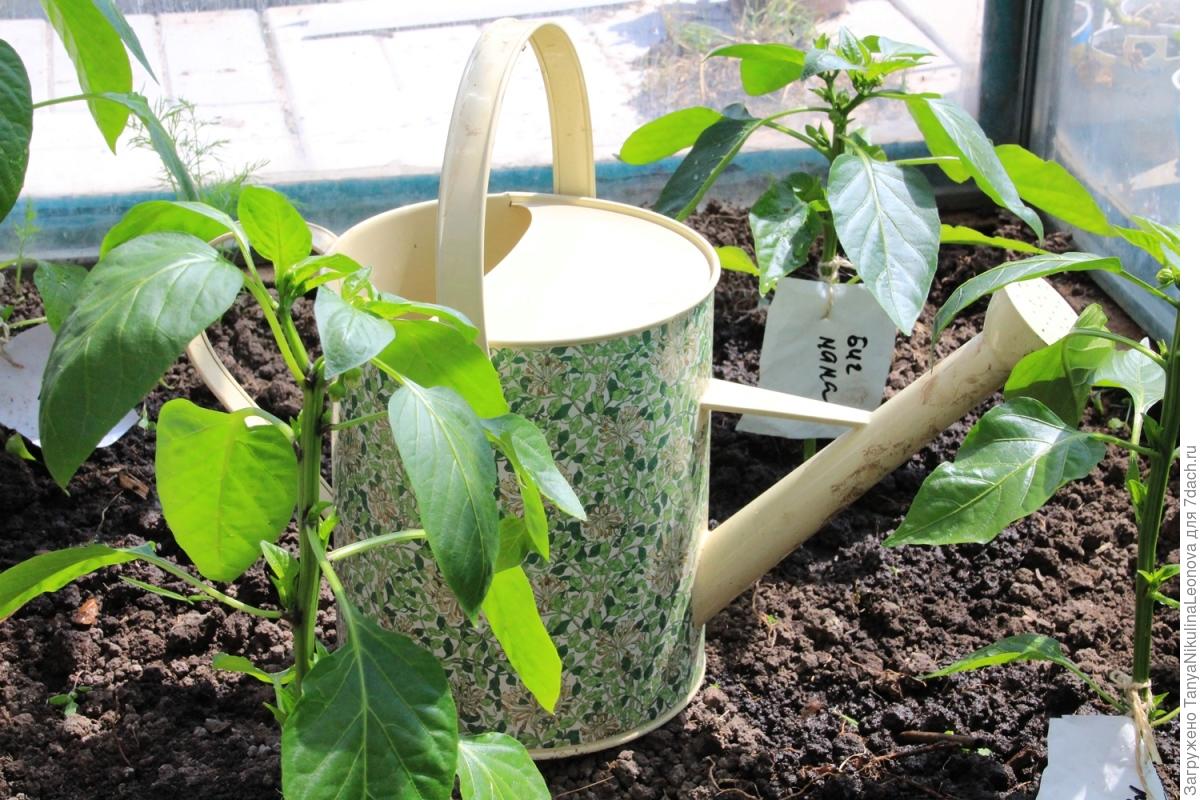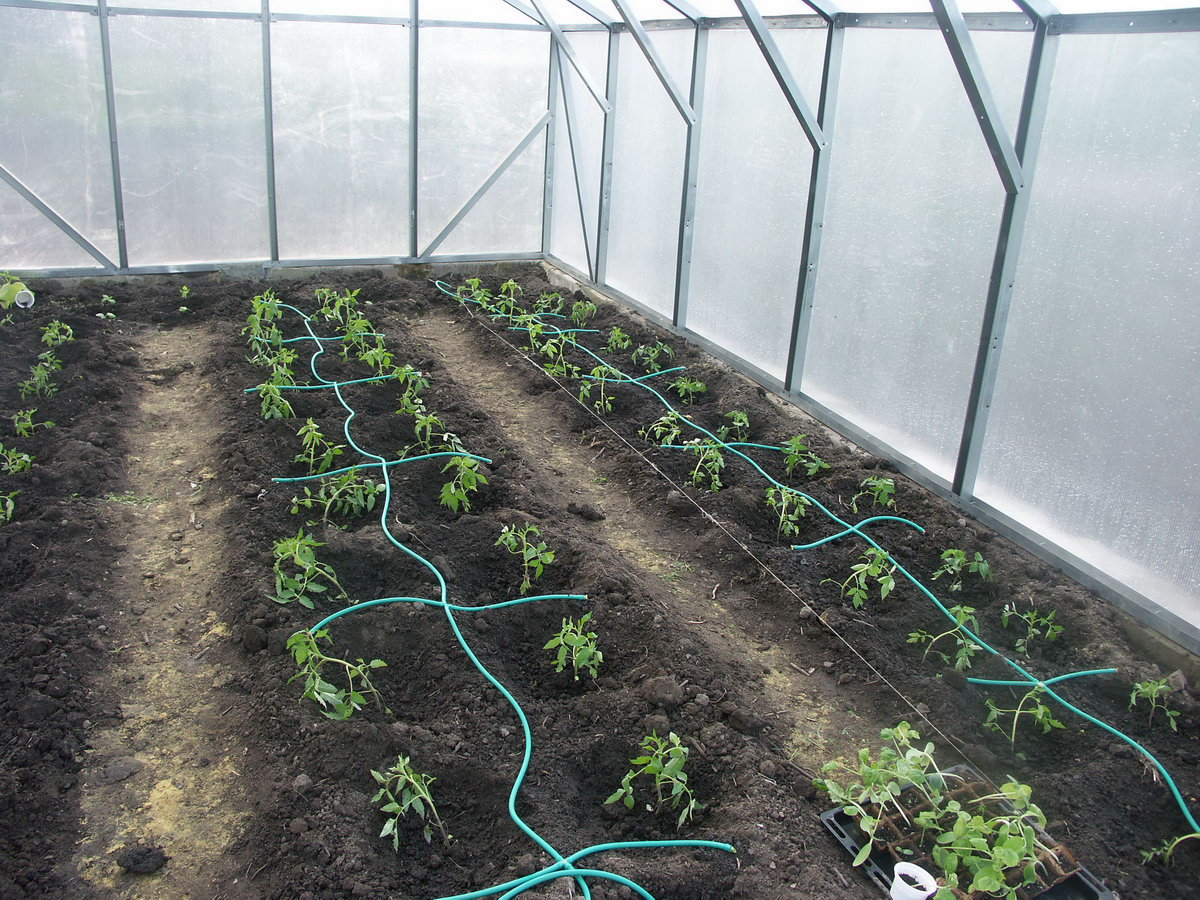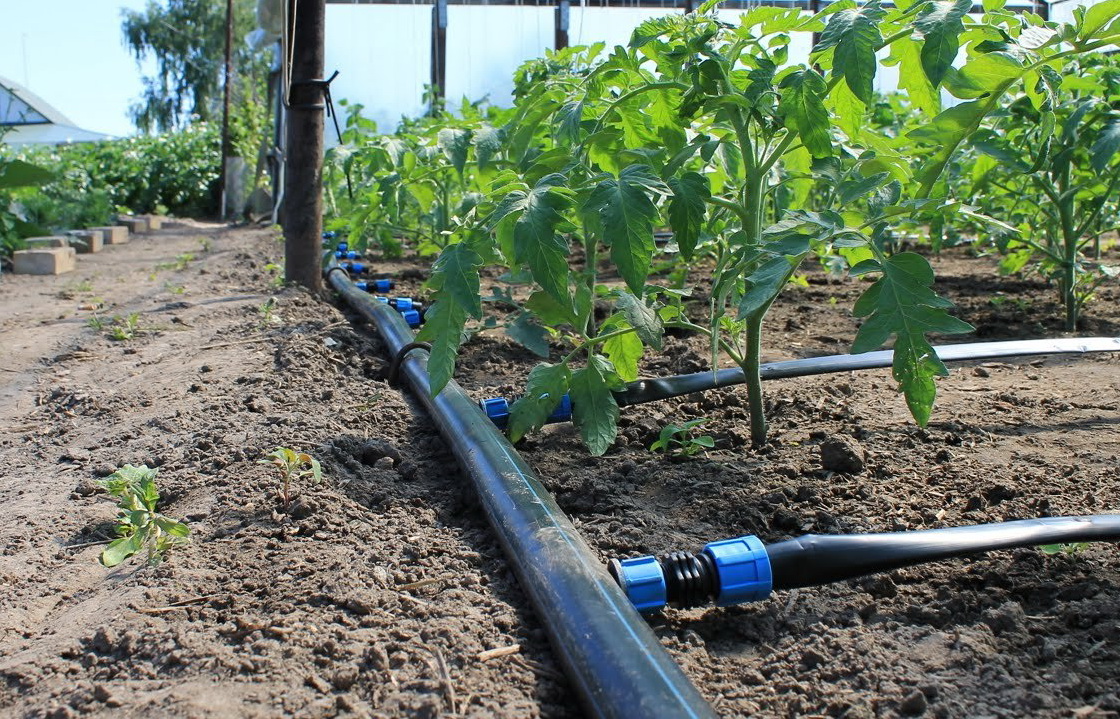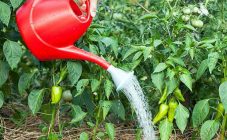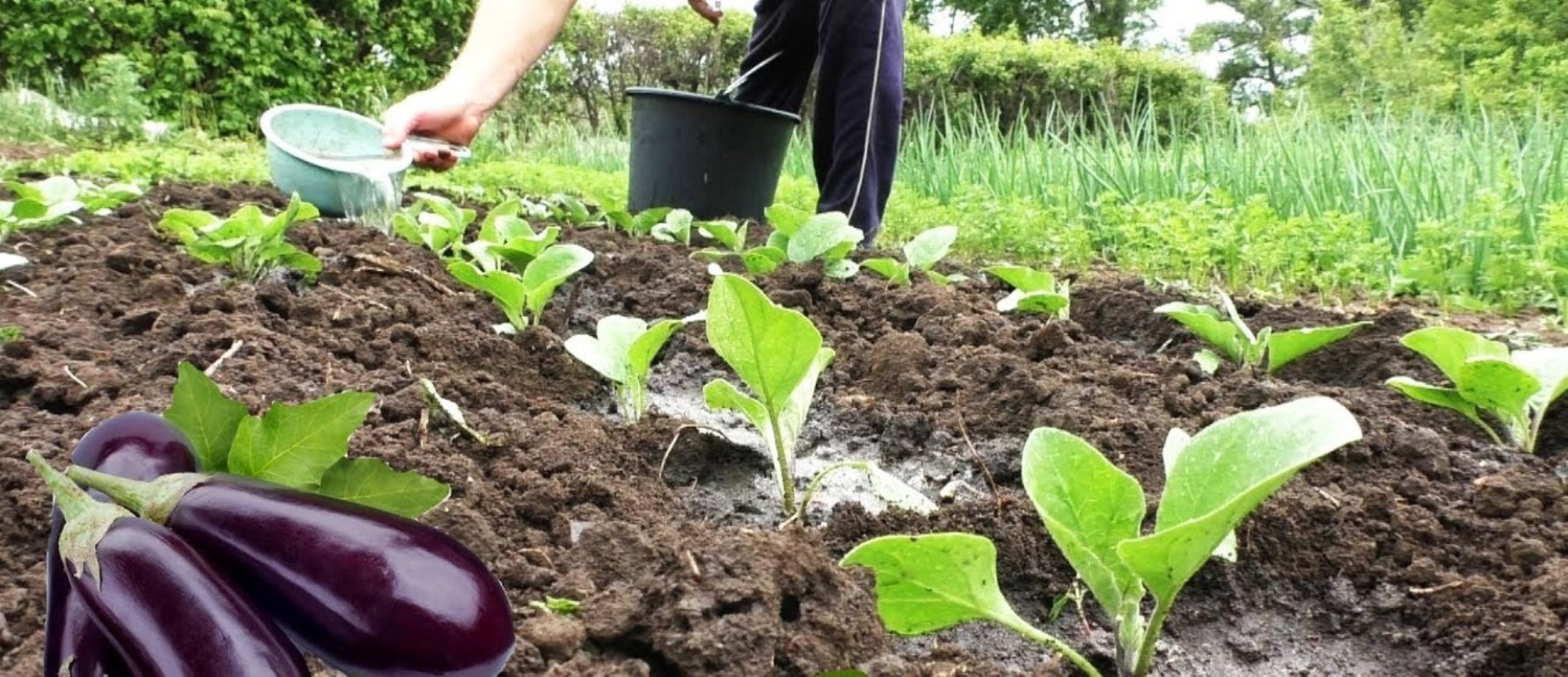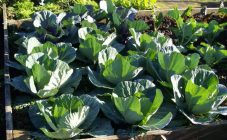Content:
Different varieties of peppers need different climatic conditions and soil moisture. This article will look at one of the most important aspects of caring for these vegetables - watering. It will be sorted out how often to water the peppers in a polycarbonate greenhouse and how to maintain optimal soil moisture.
How to water peppers in a polycarbonate greenhouse
One of the reasons for the low yield of peppers and their damage by pests and diseases is associated with the incorrect conditions of their keeping in a polycarbonate greenhouse, in particular, with watering.
How to water peppers in a greenhouse and how much water do you need? The main irrigation scheme for all greenhouse crops is, as a rule, 1 time in 5-7 days, 5 liters of liquid per bush.
It must be remembered that the soil near the bushes of plants must always be moist. However, even a strong supersaturation with moisture can adversely affect a given greenhouse crop. This is important both for the greenhouse and for the greenhouse under the film. And the option to simply spray on top is also not suitable.
Irrigation frequency and rates
Experienced gardeners strongly recommend irrigating the plantings in the morning before sunrise in order to help the soil absorb moisture, avoiding evaporation. It is also recommended to use only warm water. It is preferable to collect it from barrels in the garden. During the day it warms up and reaches the required temperature for such a heat-loving cult.
If the day was very hot, watering can be done in the evening.
Proper watering requires about 10 liters of water per 20 pepper bushes. And if the greenhouse is of the sandy type or is simply poorly fertilized, then the amount of water can be increased to 1 liter per 1 bush.
The water should be evenly and neatly distributed around the bushes. Avoid the formation of an earthen crust near the plant. If the soil is prone to this, it is worth taking special measures to eliminate this problem, for example, periodically loosen the ground.
To promote the correct development of the root system of peppers, you can follow the principle of one-sided watering, which consists in the fact that one half of the bush is irrigated and the other is actively loosened. The next time the sides change.
If the period of ovary formation or active fruiting has begun, the irrigation frequency should be increased up to 2 times in 7 days.
Greenhouse peppers also need a unique irrigation system. After planting it directly in the greenhouse, the bushes need to be plentifully snarled. The procedure is repeated after 5 days. In the future, the planted seedlings are irrigated every 2 days.
Many also complain that peppers do not grow well in August. This is primarily due to the fact that the culture is very thermophilic, and the air temperature in the last month of summer is not as high as these people from a tropical country would like. Watering peppers in August in a greenhouse should be done 1 time in 7 days with warm water.
Watering methods
You can moisten the soil under the peppers using different devices:
Manual
This method is considered the simplest and most primitive option for irrigating greenhouse plants. It cannot be classified as convenient: it is carried out using watering cans, hoses or other containers for water.
Mechanical
Watering plants using a mechanical method is much more convenient than manual. But it also has certain difficulties that arise, for example, when adjusting the pressure and developing a constant uninterrupted supply of water to the structure for irrigation.
Auto
The automatic system is a set of pipes and tanks connected to each other and equipped with special sensors that measure the humidity of the air and soil. After special adjustment and coding of the program, it will know when and how much water to supply to the plants. Automatic irrigation works without human intervention and is currently the most functional method of equipping greenhouse plants with moisture.
This system is most commonly used when wetting remote areas where demanding peppers are growing.
Combined
Combined irrigation is a system that functions both autonomously and with the help of a person. There may be several objective reasons for its application:
- in places where plants grow, there are frequent power outages, and automatic irrigation often does not work;
- different varieties of peppers grow in the greenhouse, which are irrigated in different ways, and the automatic system does not always provide for irrigation according to 2 or more schemes;
- automatic pressure is very weak and insufficient for high-quality irrigation.
To create a functional automatic irrigation system, the following factors must be present:
- uninterrupted power supply;
- large replenishment water supply;
- availability of equipment;
- the ability to correctly bring pipes to places where bushes grow.
Water can be supplied from wells, water supply systems and wells. Pipes can be laid not only underground, but also on the surface of the ground.
The most functional and convenient is the drip irrigation system, which is a combination of special irrigation droppers connected by a hose. It allows optimizing irrigation, as well as feeding peppers, which plays an important role in their proper growth and development.
Why is waterlogging dangerous?
Leaving the soil dry for a long time when growing peppers is strictly prohibited. These are very moisture-loving plants that are difficult to tolerate dehydration. But it is not recommended to oversaturate the soil with moisture either.
Water-saturated soil contributes to the development of diseases of the root system, in particular, it can lead to its decay. Also, watering must be stopped due to the fact that an excess of water provokes diseases of plants of different etiology.
Excessive moisture can attract the famous enemies of all summer residents - slugs. They feed on plants such as peppers and love waterlogged climates.
The main mistakes when watering
Often, novice gardeners, when watering peppers, make mistakes that lead to the death of seedlings, large bushes and a lack of harvest:
- Incorrect selection of materials for the irrigation system.Many people use low-quality material. Thin pipes will not be able to give the proper pressure and will not last just one season. If the summer resident wants the irrigation installation to last as long as possible, you need to use rigid plastic pipes and high-quality materials to hold them together.
- Lack of oxygen supply to peppers. Many people neglect to loosen the soil, forgetting that sufficient oxygen is needed for good growth and development of the root system. The soil needs to be loosened after each watering, but not overdo it and not damage the roots.
- Active watering during flowering. During the flowering period of peppers, it is necessary to reduce the introduction of water, since the peduncles can begin to fall off under the pressure of the liquid.
- An excess of nitrogen fertilizers. Inexperienced summer residents often do not know that plants do not need nitrogen intake during the flowering period. Instead, they need supplements such as calcium and phosphorus. If you overdo it with nitrogen fertilizers, the plant may not grow at all.
- Incorrectly set temperature. As you know, this plant does not like cold, therefore low temperatures are destructive for it. But also do not allow the temperature to rise to 35 ° C. Such a regime can adversely affect plants and lead to massive loss of inflorescences. In addition, heat evaporates moisture from the soil and makes the air drier, which can also adversely affect the pepper.
Pepper is a very healthy product. For example, the use of Bulgarian provokes the release of endorphins (hormones of happiness) into the bloodstream. Despite the fact that this is a very whimsical plant, if you follow all the simple rules of watering and feeding, it will delight you with a good harvest.
